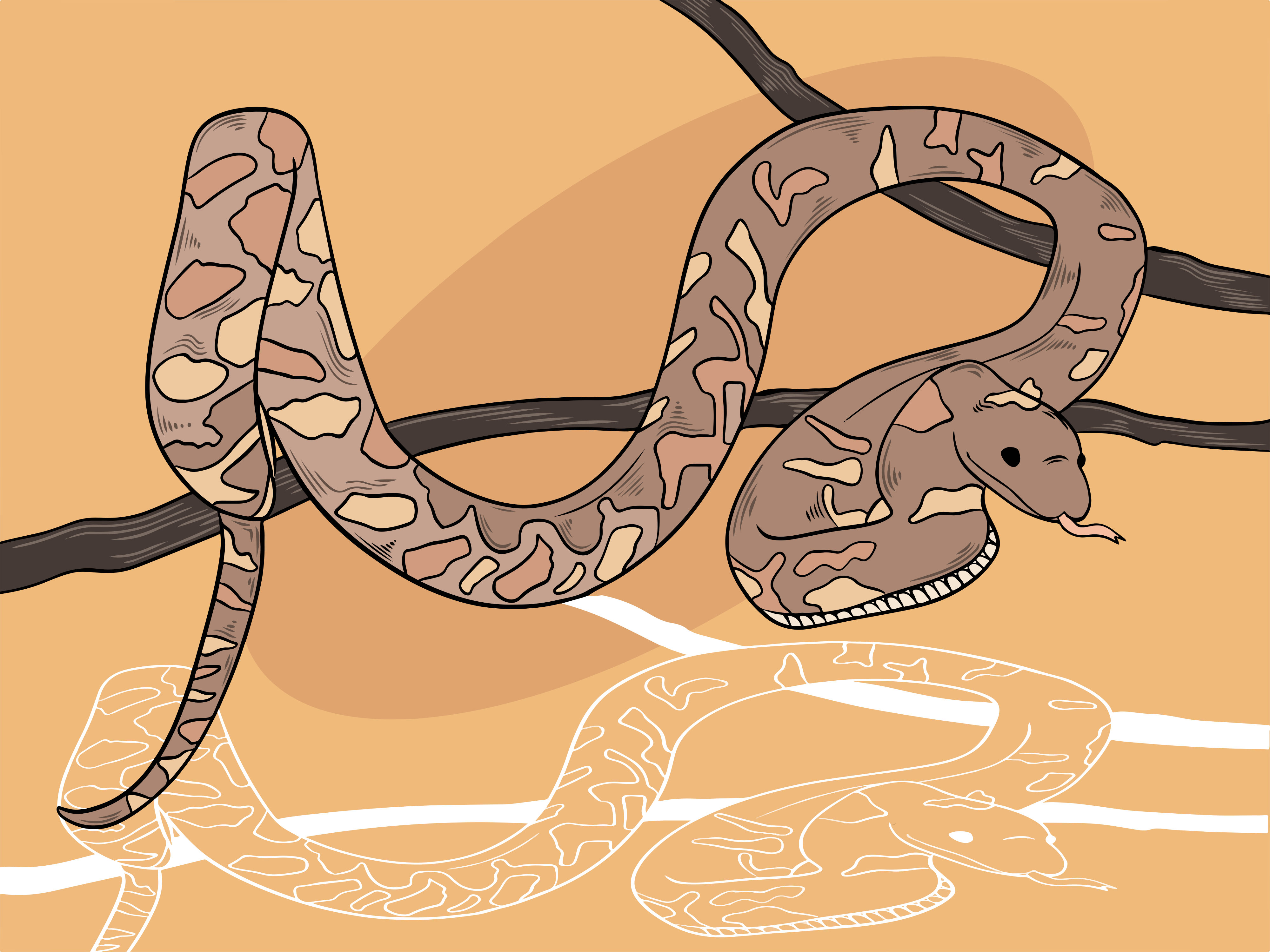Coming up to Darwin, you'll come across a mix of common snakes, including non-venomous ones like the Golden Tree Snake and Water Python, as well as dangerous species like the Inland Taipan and Eastern Brown Snake.
It's essential to stay calm if you spot a snake and back away slowly. Wear protective clothing and keep a safe distance. Understanding their habitats and behaviour can enhance your safety—discover more about these fascinating creatures to better prepare yourself.
Overview of Common Snakes in Darwin
When exploring the rich biodiversity of Darwin, you'll come across several common snake species that thrive in this unique environment.
To assist with snake identification, remember that the Golden Tree Snake, often found in urban snake habitats, is non-venomous and has a distinctive greenish hue. Additionally, the Golden Tree Snake grows up to 2 metres long, making it a notable species in the region. Snakes play a vital role in controlling rodent populations, maintaining ecosystem balance. They also emit a foul odour when handled firmly, which can be a useful identification clue.
You'll also find the semi-aquatic Water Python near water sources, while the Olive Python prefers wetlands and forests.
The ground-dwelling Children's Python can be spotted in rocky areas, and the Common Keelback specialises in frog predation within rainforests.
Familiarising yourself with these species not only enhances your appreciation of Darwin's wildlife but also equips you with valuable snake identification tips for safe interactions in their diverse habitats.

Eastern Brown Snake in Darwin.
Venomous Snake Threats in the Area
While exploring Darwin's diverse landscapes, you should be aware of the venomous snake threats that inhabit the region.
The inland taipan boasts the highest venom potency, capable of killing an adult human within 45 minutes. The eastern brown snake leads in snakebite fatalities, causing severe systemic issues. Coastal taipans and mulga snakes also present significant risks, with rapid bites and large venom outputs respectively. To guarantee bite prevention, stay vigilant in high-risk habitats like woodlands and urban areas, where these snakes commonly reside. Additionally, it's important to note that snakes are most active during the warmer months, from September to April. Wearing thick boots and long pants during outdoor activities, and avoiding tall grass or debris where snakes may hide, can help reduce encounters. For instance, the Eastern Brown Snake is responsible for over 60{3e36e8854b03c6149a30200a224b08941b9f243fec41d8a3845efcbb8dc51a44} of snake bite deaths in Australia. Remember that many snakes are non-aggressive and will typically avoid humans if given the chance.

Death Adder in Darwin.
Safety Precautions When Encountering Snakes
Encountering snakes can be a startling experience, but knowing how to react can greatly reduce the risk of a bite. Stay calm and slowly back away to avoid sudden movements that could trigger a strike.
Never attempt to handle a snake or approach one, even if it appears to be dead. Always wear protective clothing, such as long pants, thick socks, and over-the-ankle boots, to minimise bite risk. In addition, wearing proper footwear can significantly reduce the likelihood of snake bites.
When exploring, carry a torch and avoid potential habitats like dense vegetation and long grass. Maintain a safe distance of at least 2-3m, and be cautious when stepping over logs.
Alert others to a snake's location without provoking it, ensuring everyone stays safe while enjoying the outback.

Snake catcher callout locations across Darwin. Source Researchgate.
Habitat and Distribution of Snake Species
Understanding the habitat and distribution of snake species is essential for appreciating their role in the ecosystem. Each species exhibits specific habitat preferences that influence their distribution patterns.
For instance, the Inland Taipan thrives in arid, rocky regions, while the Coastal Taipan prefers tropical grasslands and woodlands. Urban environments are favoured by Eastern Brown Snakes, which exploit rural-urban interfaces for food. Long, scale-covered vertebrates like Carpet Pythons inhabit rainforests and savannahs, whereas Water Pythons dominate freshwater habitats. Meanwhile, Golden Tree Snakes adapt well to urban settings, taking advantage of local frog populations. Additionally, many of these snake species, including Carpet Pythons, are semi-arboreal predators that utilise trees for hunting. The Eastern Brown Snake, known for its high level of venom potency, often resides in suburban areas due to land clearing and available food sources.
Recognising these preferences and patterns helps you understand the delicate balance of their ecosystems and the importance of preserving their habitats.
Behaviour Patterns of Darwin Snakes
The behaviour patterns of Darwin snakes reveal how these reptiles interact with their environment and each other.
Coastal Taipans display aggressive behaviour, especially when cornered, while Eastern Brown Snakes are highly aggressive, posing risks to humans. Non-venomous snakes like Slatey Grey Snakes employ defensive tactics, emitting foul odours when threatened, whereas ground-dwelling species might inflict lacerations. Most snakes prefer avoidance over confrontation, retreating unless provoked. During breeding seasons, such as September to November, activity levels increase, heightening their interactions with potential threats. Understanding these behaviour patterns is essential for safely coexisting with Darwin snakes, as bites often occur during attempts to handle or eliminate them, despite their generally shy nature. Additionally, their venom composition reflects ecological pressures, emphasising the importance of studying these behaviours for both safety and scientific insight. Eastern Brown Snakes are particularly noteworthy for their unique threat displays, which can be misinterpreted as aggression. Natural history involves not just observing these behaviours but also educating others about them to foster greater understanding.
First Aid for Snake Bites
When a snake bite occurs, quick and effective first aid can be essential in minimising the impact of venom. First, move the victim to safety, ensuring they stay away from the snake. Call emergency services immediately.
Apply a firm pressure bandage around the bite area to slow venom spread and immobilise the affected limb, keeping it below heart level. Avoid outdated treatment options like tourniquets or venom suction, which can do more harm than good. Monitor for symptoms like swelling or pain, and note the time of the bite for medical professionals.
